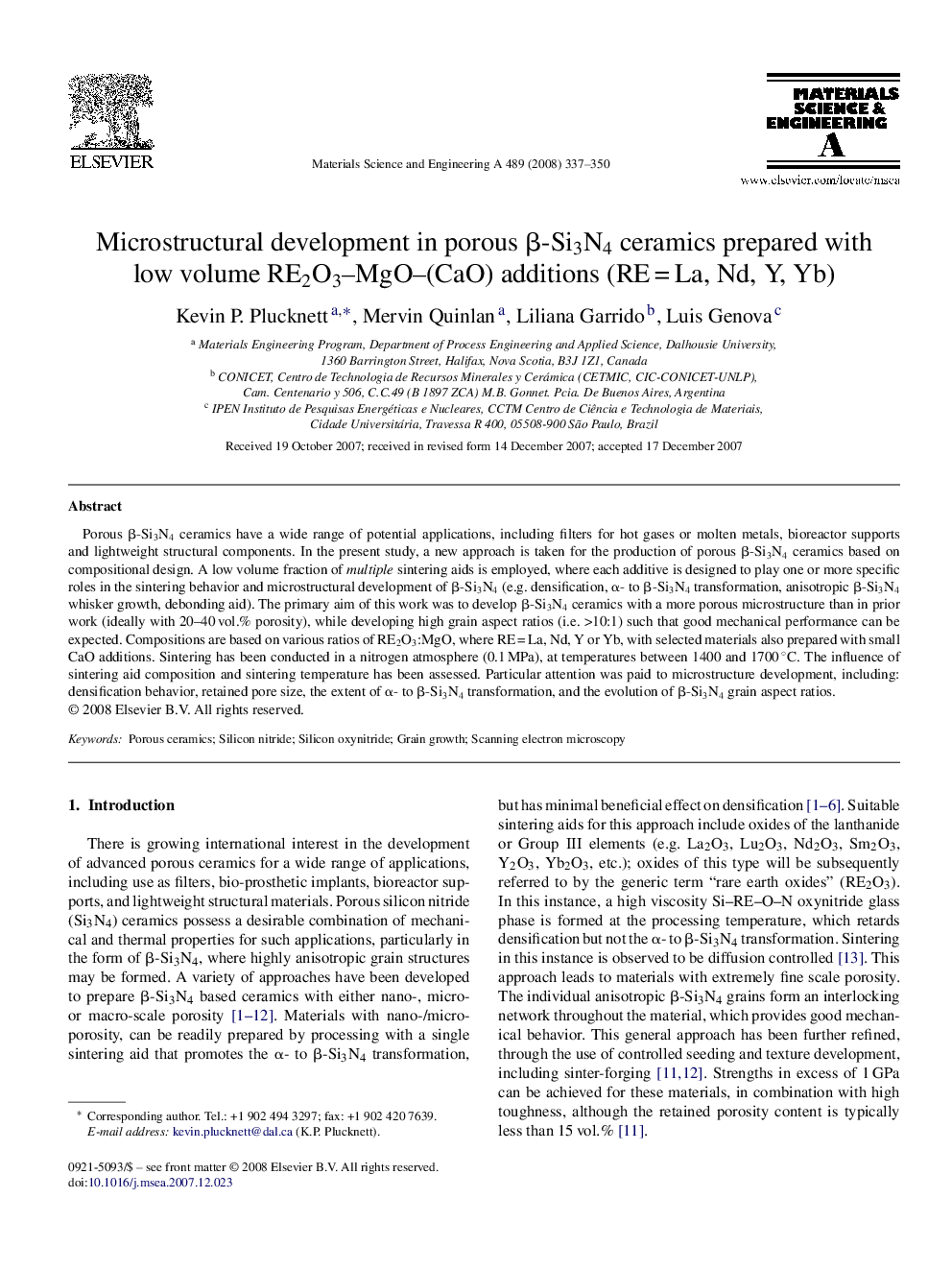| Article ID | Journal | Published Year | Pages | File Type |
|---|---|---|---|---|
| 1582129 | Materials Science and Engineering: A | 2008 | 14 Pages |
Abstract
Porous β-Si3N4 ceramics have a wide range of potential applications, including filters for hot gases or molten metals, bioreactor supports and lightweight structural components. In the present study, a new approach is taken for the production of porous β-Si3N4 ceramics based on compositional design. A low volume fraction of multiple sintering aids is employed, where each additive is designed to play one or more specific roles in the sintering behavior and microstructural development of β-Si3N4 (e.g. densification, α- to β-Si3N4 transformation, anisotropic β-Si3N4 whisker growth, debonding aid). The primary aim of this work was to develop β-Si3N4 ceramics with a more porous microstructure than in prior work (ideally with 20-40 vol.% porosity), while developing high grain aspect ratios (i.e. >10:1) such that good mechanical performance can be expected. Compositions are based on various ratios of RE2O3:MgO, where RE = La, Nd, Y or Yb, with selected materials also prepared with small CaO additions. Sintering has been conducted in a nitrogen atmosphere (0.1 MPa), at temperatures between 1400 and 1700 °C. The influence of sintering aid composition and sintering temperature has been assessed. Particular attention was paid to microstructure development, including: densification behavior, retained pore size, the extent of α- to β-Si3N4 transformation, and the evolution of β-Si3N4 grain aspect ratios.
Related Topics
Physical Sciences and Engineering
Materials Science
Materials Science (General)
Authors
Kevin P. Plucknett, Mervin Quinlan, Liliana Garrido, Luis Genova,
